After the winter-time in the Adriatic Sea
| Project Acronym &Title: ESAW – After the winter-time in the Adriatic Sea Area: Central and Southern Adriatic Sea (015-018°E, 41-43.5°N) Research Vessel: RV BIOS DVA, IOF, Institute of Oceanography and Fisheries, Split, Croatia Chief scientist: Vedrana Kovačević, OGS, Italy Other project partners: IOF Split, Croatia; IMP Dubrovnik, Croatia; ISMAR-CNR Bo-logna, Italy; GEOMAR Kiel, Germany; IBF-CNR Pisa, Italy; IMBK Kotor, Montenegro Date: December 10-15, 2015 (ESAW-1) & April 5-10, 2016 (ESAW-2) |
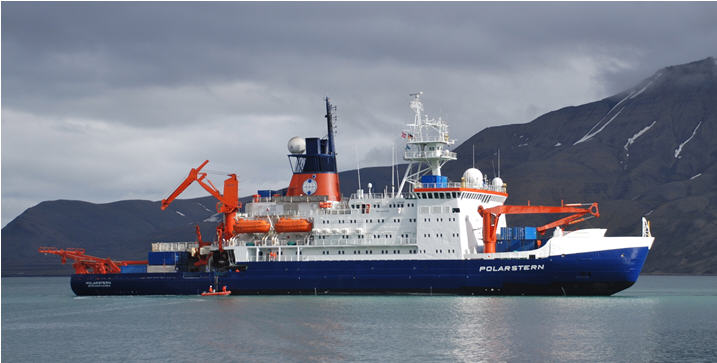 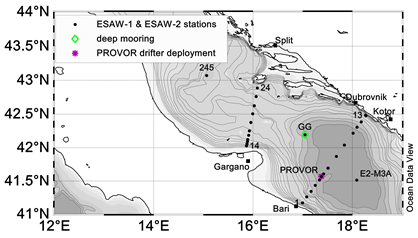 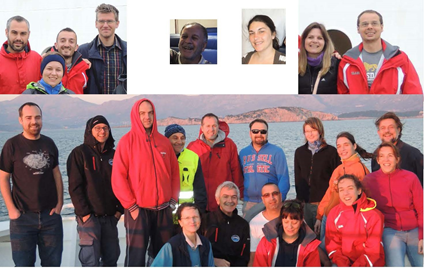 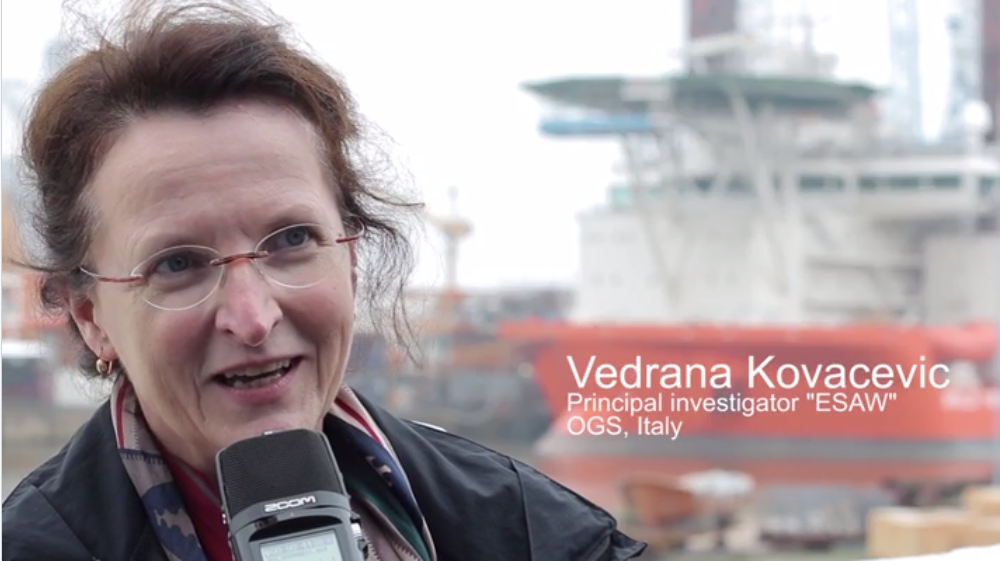 |
| Vedrana Kovačević, OGS (National institute of Oceanography and Experimental Geophysics), Trieste, Italy “I am extremely honored to have had the opportunity to coordinate the field activities during ESAW on the RV BIOS DVA. Sixteen enthusiastic researchers and students composed the international team, which fully occupied the working capacities of the ship. With the help of the captain and the ship crew, we fulfilled almost all programmed activities. The two ESAW cruises were an opportunity to establish contacts and collaboration among different groups of researchers that joined their efforts to study comprehensively the wider area of the Adriatic Sea. Without the support of the Eurofleets2 this challenging enterprise would have been hardly feasible.” |
 |
Main Objectives
The Adriatic Sea is a sea of a varying environment. One of the most peculiar aspects are processes of the dense water formation during winter. This phenomenon is triggered by cooling and evaporation at the surface, under the bursts of the cold and dry NE (bora) winds. The vein of dense waters spread as intermittent deep current, affecting the physical and biogeochemical properties within the basin, and further, especially by oxygenating deep layers. Dense waters take part in the water and mass exchange between the Adriatic and the northern Ionian Sea. Together with weather and climate, the salt is another important ingredient in this process (more salt, more dense the waters). Among other causes, the salt content depends on varying salt quantity within the inflow from the Ionian. ESAW was relised as two snapshots: before and after the winter 2015/2016, with the aim to capture the specific environmental conditions from many aspects: physical, biogeochemical, and ecological. Therefore, an international team of researchers collected a multidisciplinary data set, to describe both similarities and differences between the two seasons, and to explore the actual environmental conditions with respect to the long term variability of the Adriatic Sea.
Data regarding key groups of the food web (phytoplankton, zooplankton, and microbial community) will be assessed in connection to the regeneration processes occurring in the bottom dense water. Dissolved Organic Carbon (DOC) data and cromophoric dissolved organic matter (CDOM) optical properties, represent a unique opportunity to assess the DOC and CDOM distribution in the different areas and water masses of the Adriatic Sea and to investigate long-term variation in their distribution. DOC concentration as the result of the biological production and consumption is affected by external inputs (river and atmosphere).These data could therefore, confirm the role of DOC in C export and sequestration in the Adriatic Sea and allow for an investigation about CDOM distribution and cycle. Transient tracers CFC-12 and SF6 will quantify ventilation and assess deep-water formation rates, but also quantify temporal changes in ventilation. Data on benthic sediment characteristics and community in the study area will fill eventual gaps and enable characterisation of the study area.
Work progress and main achievements
|
We were lucky, considering that in December and April the weather can be quite bad, and almost all planned work was done. With us there were three PhD students, some of them with the first experience at sea. Most of our water or sediment samples must be analyzed in the on-shore laboratories, and this is still a work in progress. Some of the on-board activities and attainments are exemplified in the three panels on the right-hand side. To illustrate the amount of data collected, here are some numbers: 57 high resolution vertical profiles of pressure, temperature, salinity, dissolved oxygen, fluorescence and turbidity and light transmission were performed at about twenty-five locations within the study area (upper panel). Water samples from 331 selected depth horizons were taken for different biogeochemical laboratory analyses (middle panel). 138 hauls with the zooplankton nets at different depth intervals and thickness within the upper water column were executed (lower panel). 34 benthic surficial sediments were collected by a grab. About 1100 nm long transects of marine currents within the upper 80-100 m of the water column as well as the bottom depths were registered. In December 2015 a mooring line was deployed in the central part of the study area, and in April 2016 it was recovered successfully. This operation produced a four months long time series of marine currents, temperature, salinity, dissolved oxygen, and suspended sediment flux near the sea floor within 60 m from the sea bed. One PROVOR drifter was deployed in the southern Adriatic in April 2016. It is destined to move with marine currents for a long time and register at regular time steps temperature, salinity, dissolved oxygen, nutrients, fluorescence, 3-channel radiance, and CDOM. Laboratory analyses for the dissolved oxygen concentrations from the water samples were performed on board, while most of other parameters will be determined in the on-shore laboratories. These include nutrient concentrations, DOC, CDOM, CFCs, microbiology and zooplankton, and sediment analyses.
At the station GG, we found that the salinity near the sea bed and in the upper 300 m increased from December to April, the characteristics which is observed also in the deep southern Adriatic, and in the middle Adriatic Pit. Contemporary the temperatures of the near bed layers slightly increased. As a result, the density is slightly lower. How the redistribution of the salinity and other physical properties in the water column will relate with the biogeochemical properties is one of our next goals. |
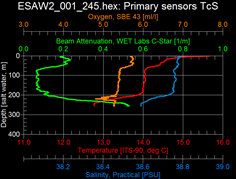 High-resolution records versus depth. High-resolution records versus depth. |
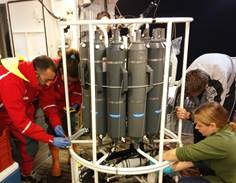 Water sampling from different depths Water sampling from different depths |
|
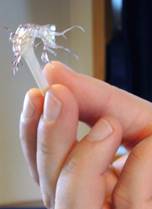 Example of the zooplankton life. Example of the zooplankton life. |
|

|
For more information:
Argo Project (http://www.argo.ucsd.edu/).
Ritmare WP3 and WP4 (http://www.ritmare.it/)
